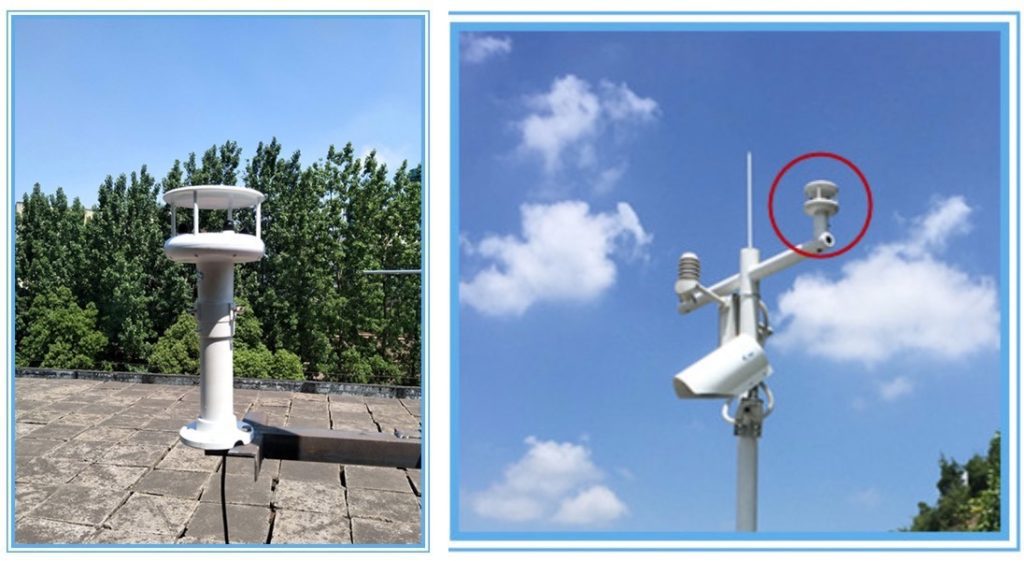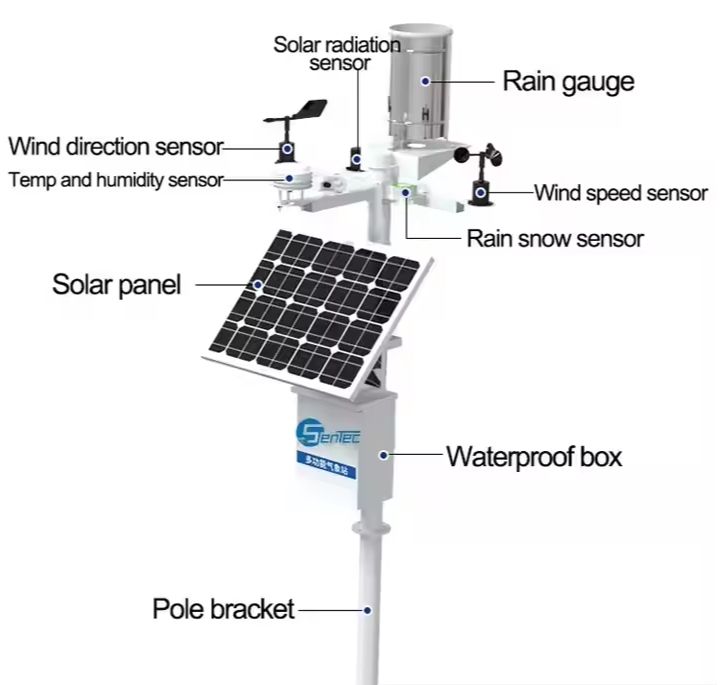The wind speed sensor is a device used to measure the wind speed.
What is a wind speed sensor ?
The wind speed sensor is a device used to measure the wind speed. It is small and light, easy to carry and assemble. According to the working principle, it can be roughly divided into mechanical wind speed sensor and ultrasonic wind speed sensor. It can effectively obtain wind speed information. The shell is made of high-quality aluminum alloy profiles or polycarbonate composite materials, which are rain-proof, corrosion-resistant and anti-aging. It is a convenient, safe and reliable intelligent instrument. Mainly used in meteorology, agriculture, ships and other fields, can be used outdoors for a long time.
What is a Ultrasonic anemometer ?
Ultrasonic anemometer, also known as ultrasonic anemometer, ultrasonic wind speed and direction sensor, is a wind speed and direction measuring instrument developed based on ultrasonic principle. Wind speed and direction. The sensor can measure the instantaneous value of wind speed and wind direction at the same time.
Wind speed sensor working principle
According to the different measurement principles, wind speed sensors can be divided into mechanical wind speed sensors and ultrasonic wind speed sensors
The working principle of mechanical wind speed sensor
The wind force generated by the air flow drives the sensor to rotate, and the central axis drives the internal sensing element to generate a pulse signal. In the wind speed measurement range, the wind speed and the pulse frequency have a certain linear relationship. The wind speed can be calculated accordingly.
The working principle of ultrasonic wind speed sensor
The air flows through the sensor probe measurement area, and there are two pairs of ultrasonic probes in the area (generally arranged in a “cross” shape), and the wind speed can be calculated by calculating the time difference of ultrasonic transmission between two points. way to avoid the effect of temperature on the speed of sound
Mechanical wind speed and direction sensor VS Ultrasonic wind speed and direction sensor
Compared with the traditional mechanical wind speed and direction transmitter, the ultrasonic wind speed and direction transmitter has the following four advantages:
1. No inertial measurement, no starting wind speed limit, zero wind speed operation, 360° omnidirectional no angle limit, and can obtain wind speed and wind direction values at the same time;
2. Adopt one-piece structure design, there are no moving parts as a whole, and the shell is made of engineering plastic material, which has small wear and long service life;
The third is to adopt random error identification technology, which can ensure low discrete error of measurement even under strong wind, making the output more stable;
Fourth, the equipment does not require on-site calibration and maintenance;
Wind speed sensor application
The application of the wind speed sensor is very extensive, and the wind speed sensor with different signal output is selected according to the actual needs of the site. The wind speed sensor can be widely used in greenhouse, environmental protection, meteorology, aquaculture, tuyere and other industries.

How to use the wind speed sensor ?
Be sure to use the wind speed sensor correctly in accordance with the requirements of the instruction manual; during use, if the wind speed sensor emits abnormal smell, sound or smoke, or liquid flows into the inside of the anemometer, be sure to shut down immediately and remove the battery (battery powered version)
1. The wind direction sensor is taken out of the packing box and assembled. Pay attention to the following points: the wind vane is inserted in the direction of the arrow; the front and rear weights of the wind vane should be balanced; the front and rear wings should be in the same plane as the rotation axis; in the same direction.
2. The sensor component is composed of wind speed sensor, wind direction sensor and sensor bracket. When assembling, the sensors should be connected to their respective plug-ins first, then set on the bracket sleeve, and the screws should be tightened.
3. The working voltage of the sensor is usually DC 5V, due to the built-in lightning protection device.
How to analyze the the failure cause of the wind direction anemometer sensor?
The wind direction and wind speed sensor may have some faults during the use of the sensor. The following is an analysis of the failure causes of the wind direction and speed sensor:
(1) Wind direction sensor: the wind vane is inflexible and stuck; the wind direction indication value remains unchanged at 239°; the wind direction indication value is 0°; Incorrect; the wind vane turns but the wind direction indication does not change, etc. Measure the wind direction sensor with electricity, if there is any fault, replace the sensor; if it is found to be stuck, replace the sensor or remove the sensor for maintenance and cleaning; if it is 239 ° unchanged, the signal is open, check the connectors and cables; the wind direction indication value is 0 ° Check Cable and power supply system; connect with the backup device, turn the wind vane, if it can be rotated to make the wind direction indication value 239°, it means that the wind direction sensor is working normally, then check whether other parts work normally; connect with the backup device, turn the wind vane, always If the wind direction indication value does not appear 239°, and other directions often appear jumping display, it means that some infrared light-emitting diodes in the wind direction sensor are damaged, check and repair; use the wind direction and wind speed calibrator to check whether the wind direction sensor is working normally.
(2) 3-cup wind speed sensor: the rotation is inflexible and stuck; the wind speed indication value is 0m/s; the wind speed indication value and the electric connection wind speed indication value have obvious deviation; the starting wind speed is obviously high; the low wind speed is normal , when the wind speed is high, it is abnormal or obviously low. When the above situation is encountered, such analysis can be carried out, and the wind speed sensor is measured with electricity. If there is any fault, replace the sensor; if a stuck phenomenon is found, remove the sensor for maintenance and cleaning or replace the sensor; the wind speed indication value is 0m/s, check the cable and If there is any problem with the power supply system, use the backup device to connect to the network and rotate the wind speed shaft. If the shaft rotates flexibly and there is no obvious noise, it means that the rotating part of the wind speed sensor is working normally. Check whether there is data on the displayed value, and if there is data, check whether other parts work normally. If there is no data, the wind speed sensor is faulty, replace the sensor; use a multimeter to detect whether there is a frequency change between the FS and the ground in the outdoor signal transfer box, if not, the sensor is faulty; use the wind direction and wind speed calibrator to check whether the wind direction sensor is working. normal.




